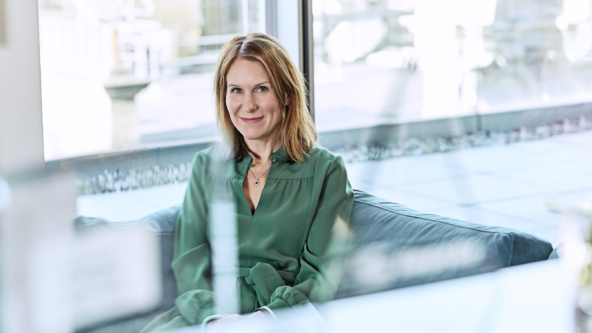We asked George Whitehead of Octopus Ventures and Alastair Peet of Shoosmiths to talk about the issues faced by start-ups when deciding how to divide company equity among its co-founders and early employees.
It can be hard to split co-founder equity in a way that keeps everyone happy and motivated. And getting it wrong can have huge financial implications and could even break up the business.
A quick internet search of ‘start-up equity disputes’ will reveal a number of well-known tales of sticky situations and co-founder relationships that went south. Facebook’s Mark Zuckerberg and Eduardo Saverin, Steve Jobs’ firing from Apple, the relatively unknown Twitter co-founder (and namer) Noah Glass.
These are extreme examples, often shrouded in mystery, and plainly not representative of most entrepreneurs’ experience. But these cautionary tales do serve as a reminder that co-founder equity splits can make or break a company.
We caught up with George Whitehead of Octopus Ventures, and Alastair Peet, a corporate partner at law firm Shoosmiths.
Shoosmiths specialises in advising companies that have secured venture capital (VC), as well as giving advice to the investors who back them.
Measure co-founder value fairly
Often, you’ll find early-stage companies where several people with a range of talents have joined forces to launch it.
The first thing to consider, says Alastair, is how valuable each individual is to the company. “You need to be thinking about what the people you have chosen as co-founders are doing for the business,” he says.
If what each co-founder is bringing to the table is equal, it may well be appropriate that they end up with equal or very similar shareholdings.
What is more common, though, says Alastair, is a scenario where one person is the true founder and driving force behind the company. “These people are usually bringing in others, whether that’s a technologist, a finance lead, to build the company, but they are the starting point for the business and its vision.”
For these founders, there are two ways of looking at things: bring talented people on early and accept you will get diluted, but with the prospect of ending up part of a bigger, more successful company.
Or, hold onto more equity but run the risk of tensions rising among employees who are adding value but are not significantly invested in the firm. “There is no easy answer to this,” says George. “I know founders who have regretted the initial 50/50 split they agreed. Either because equity owners have not pulled their weight, or, with no-one as a majority shareholder, there is a deadlock over a decision, and that has impacted the business.”
These situations highlight the value of having a majority shareholder who can have a final say and keep the company moving forward.
Avoid knee-jerk splits
While there are many published anecdotes in praise of 50/50 splits between co-founders, it is important that entrepreneurs don’t default into a joint venture position, says Alastair, splitting the business down the middle and putting in place the kinds of decision-making provisos you’d expect to see when, say, two corporates come together to work on a project.
“Having those kinds of vetoes can be really, really damaging and will stop the growth of a company. It is perfectly acceptable for two founders of equal weighting to agree an equal split on decision-making when they start out, but that is not necessarily the sort of thing you want to put in writing,” Alastair adds.
Take risks and think big
Despite equity decisions being a difficult call for founders, it is something that needs to be tackled early, and with a healthy dose of realism.
Alastair believes Europe and the UK have a unique culture around company equity, which stymies the size of business we grow. “There is, to some degree, a reluctance to give up equity that you don’t find in the US or China, where there seems to be a more ingrained embracing of risk.”
This, he says, can also affect investors’ attitudes, and you do tend to see more risk aversion and smaller pots of money relative to US counterparts.
There are, of course, exceptions, and the UK is home to hugely successful companies, like Octopus Ventures-backed Zoopla, Magic Pony and SwiftKey.
“When a company is backed properly, you can do incredible things. But we need to educate founders that they can think big, and pushing the business onto better things, and quickly, might involve them giving up more equity than they may have originally thought.”
Don’t settle for less
A related piece of advice for founders, Alastair adds, is to be choosy with investors. “You don’t need to jump the first time someone offers you cash.” A bad deal may result in a business taking, for example, a convertible loan note; handing over equity in return for making an early success of things.
“Have as many conversations as possible, and think beyond the money. You want the people who own your business to be people you get on with, and who offer the network, expertise and support you need to scale.”
And like many things in life, there is a devil in the detail. In addition to coming to the right decision around equity splits, founders also need to think about how to make a business look as attractive as possible from an investment perspective.
“Most angel investors will want to see that a business qualifies for enterprise investment scheme (EIS) relief and later on, venture capital trusts (VCTs) will want to be able to invest,” says Alastair.
These questions have to be considered alongside equity decisions, because a failure to draw lines at the outset could limit investment opportunities, hurting the business further down the road.
Apply the same mindset as you grow
When a business is a bit older, the wider question around equity allocation becomes important: how to incentivise staff. Many start-ups will use equity as a way to do just that, giving early joiners ‘skin in the game’.
Again, says Alastair, this is about founders being alive to the fact that building a successful company will mean recruiting and incentivising the best people.
As with founding teams, utilising vesting and options, where realising equity is tied to fixed time periods, often helps keep people in the business. But helping employees feel enfranchised is also a key factor. Octopus itself is mostly employee-owned, in addition to director ownership.
As George explains: “Octopus is the kind of company where everyone feels part of what we’re building, and encouraging share ownership plays a huge part of this. We hold an annual liquidity event to allow people to buy and sell shares. That fundamentally shapes the culture of the business. People who work at Octopus know that they have a stake in the business and feel that they are part of the Octopus family.”


